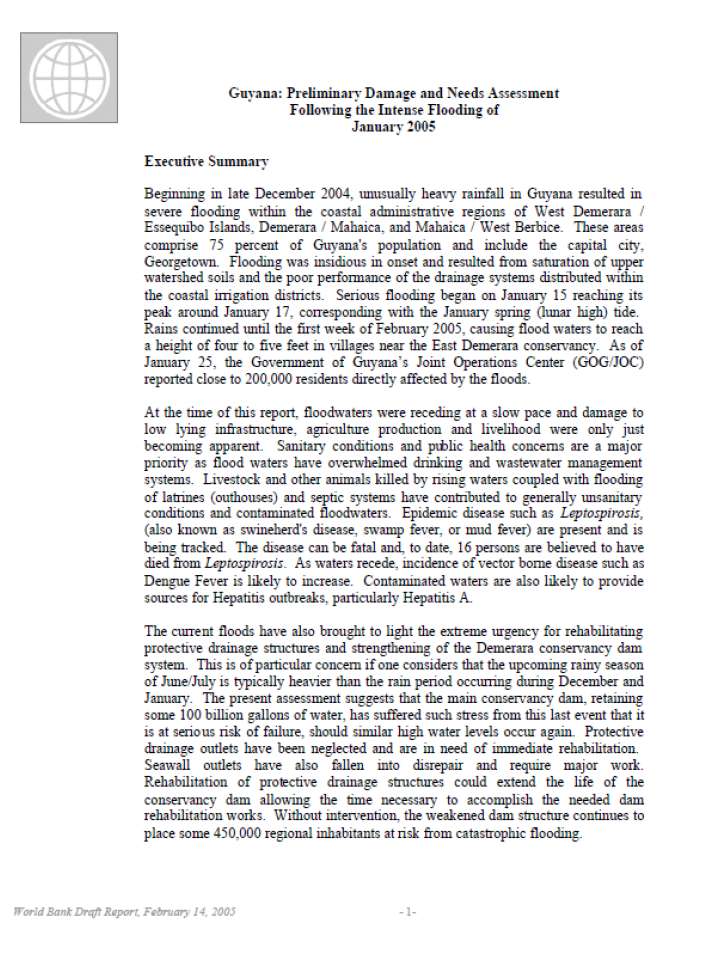Guyana: Preliminary Damage and Needs Assessment Following the Intense Flooding of January 2005
Beginning in late December 2004, unusually heavy rainfall in Guyana resulted in severe flooding within the coastal administrative regions of West Demerara/Essequibo Islands, Demerara / Mahaica, and Mahaica / West Berbice. These areas comprise 75 percent of Guyana's population and include the capital city, Georgetown. Flooding was insidious in onset and resulted from saturation of upper watershed soils and the poor performance of the drainage systems distributed within the coastal irrigation districts. Serious flooding began on January 15 reaching its peak around January 17, corresponding with the January spring (lunar high) tide. Rains continued until the first week of February 2005, causing flood waters to reach a height of four to five feet in villages near the East Demerara conservancy. As of January 25, the Government of Guyana’s Joint Operations Center (GOG/JOC) reported close to 200,000 residents directly affected by the floods.
The objective of this report is to provide a preliminary assessment of the damage incurred with a special focus on reconstruction needs likely to emerge once the relief phase is over. Its aim is to provide donors with an initial assessment of possible intervention needs within six months to a year following the emergency created by the floods.
